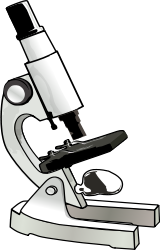Cover Gallery
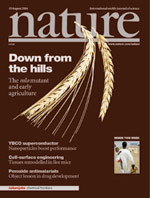
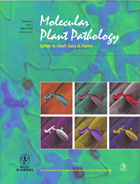
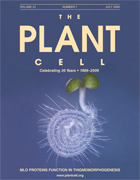
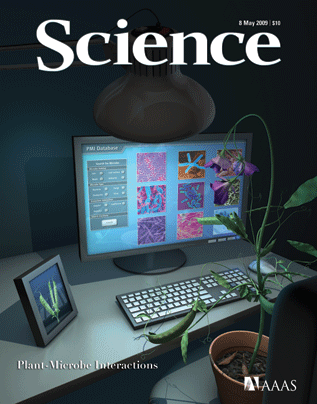
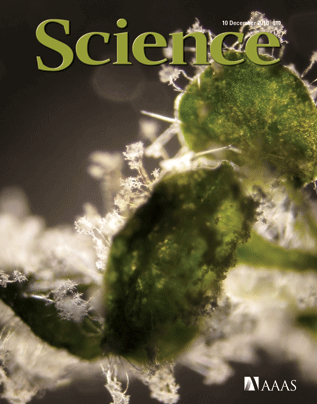
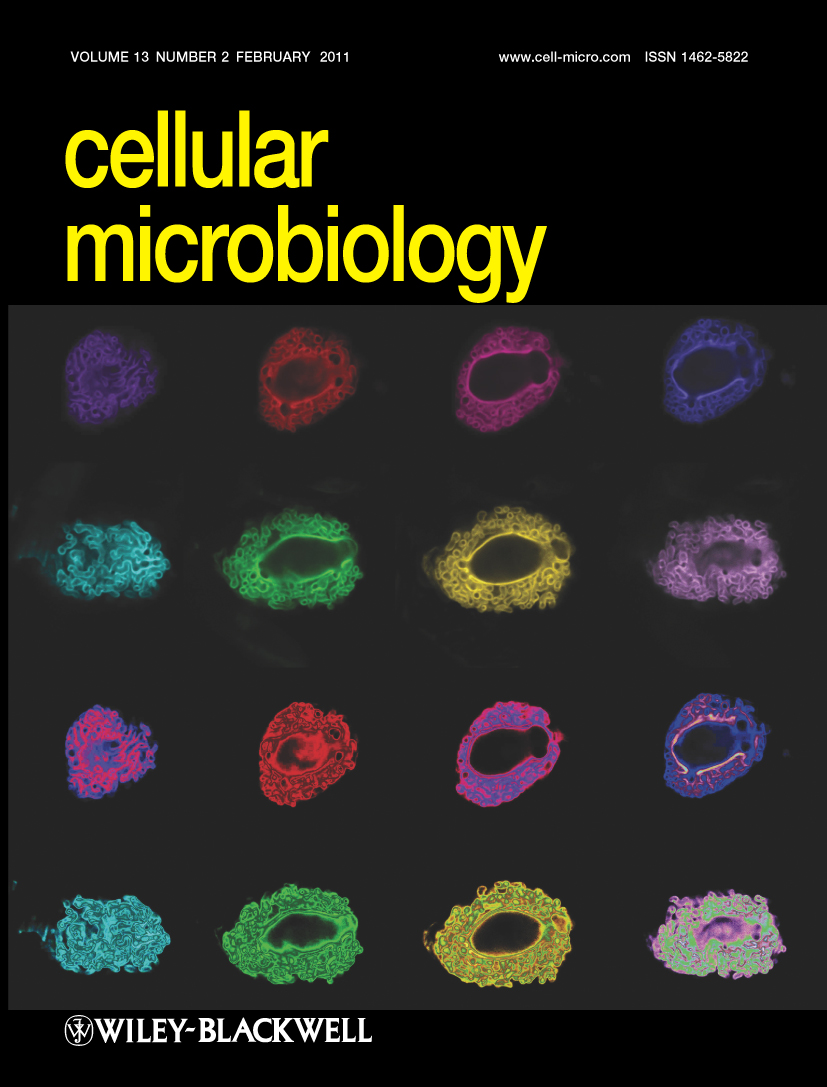
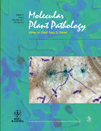
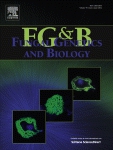
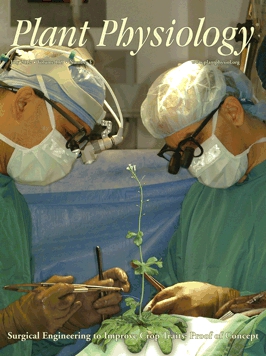
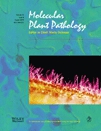
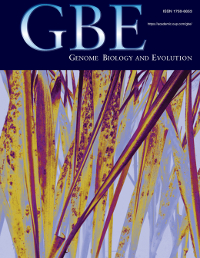
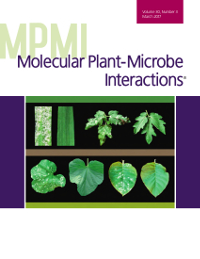
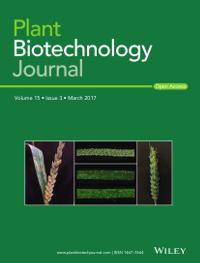
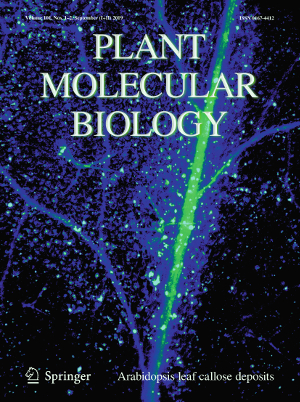
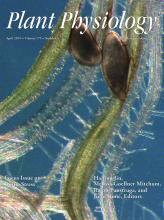
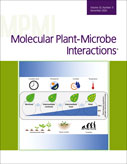
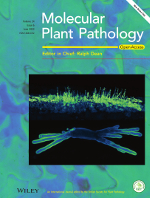
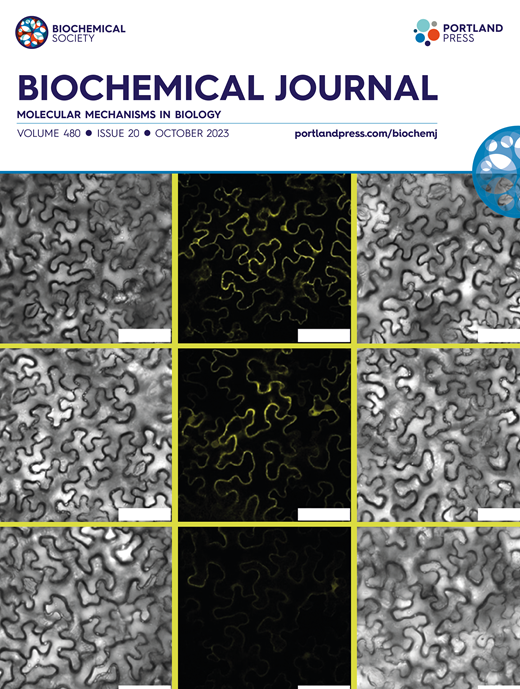
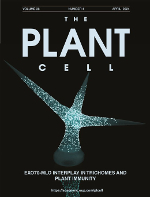
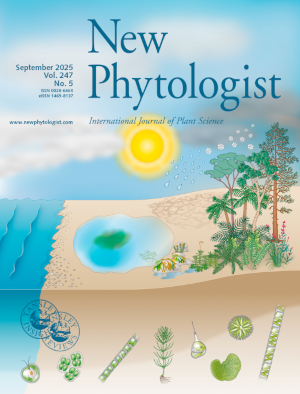
Original articles
104. Loos, A., Doykova, E., Qian, J., Kümmel, F., Ibrahim, H., Kiss, L., Panstruga, R., and Kusch, S. in press.
Saprotrophic Arachnopeziza species as new resources to study the obligate biotrophic lifestyle of powdery mildew fungi.
Molecular Ecology Resources (in press)
bioRxiv version
103. Qian, J., Xue, H., Ou, S., Mann, L., Storer, J., Fürtauer, L., Heitkam, T., Wildermuth, M., Kusch, S.,
and Panstruga, R. 2025.
TEtrimmer: A tool to automate the manual curation of transposable elements.
Nature Communications 16: 8429.
(PubMed Abstract).
bioRxiv version
102. Sabelleck, B., Freh, M., Lammertz, M., Browatzki, J., Vllaho, A.-M., Pislewska-Bednarek, M., Bednarek, P.,
and Panstruga, R. 2025.
Thiamine is a vitamin for plant-pathogenic powdery mildew fungi.
iScience 28: 113123.
(PubMed Abstract).
101. Spiller, L., Zhang, L., Gerra, S., Stoppe, C., Scheiermann, P., Calandra, T., Lolis, E., Panstruga, R.,
Bernhagen, J., and Hoffmann, A. 2025.
Synergistic enhancement of MIF-mediated acute lung injury by its plant ortholog MDL1 in vivo.
FASEB Journal 39: e70489.
(PubMed Abstract)
100. Sabelleck, B., Deb, S., Levecque, S. C. J., Freh, M., Reinstädler, A., Spanu, P. D., Thordal-Christensen, H.,
and Panstruga, R. 2025.
A powdery mildew core effector protein targets the host endosome tethering complexes HOPS and CORVET in barley.
Plant Physiology 197: kiaf067.
(PubMedAbstract)
bioRxiv version
99. Ruf A., Thieron H., Nasfi S., Lederer B., Fricke S., Adeshara T., Postma J., Blumenkamp P., Kwon S.,
Brinkrolf K., Feldbrügge M., Goesmann A., Kehr J., Steinbrenner J., Šečić E., Göhre V., Weiberg A., Kogel K.-H.,
Panstruga R., and Robatzek S. 2024.
Broad-scale phenotyping in Arabidopsis reveals varied involvement of RNA interference across diverse plant-microbe
interactions.
Plant Direct 8: e70017.
(PubMed Abstract)
bioRxiv version
98. Kusch S., Frantzeskakis L., Lassen B. D., Kümmel F., Pesch L., Barsoum M., Walden K. D., and
Panstruga R. 2024.
A fungal pathogen overcomes mlo-mediated broad-spectrum disease resistance by rapid gene loss.
New Phytologist 244: 962-979.
(PubMed Abstract)
bioRxiv version
97. Freh M., Reinstädler A., Neumann K. D., Neumann U., and Panstruga R. 2024.
The development of pleiotropic phenotypes in powdery mildew-resistant barley and Arabidopsis thaliana mlo mutants
is linked to nitrogen availability.
Plant, Cell & Environment 47: 2362-2376.
(PubMed Abstract)
96. Huebbers J. W., Caldarescu G. A., Kubátova Z, Sabol P., Levecque S. C. J., Kuhn H., Kulich I., Reinstädler A.,
Büttgen K., Manga-Robles A., Mélida H., Pauly M., Panstruga R.*, and Žárský V.* 2024.
Interplay of EXO70 and MLO proteins modulates trichome cell wall composition and powdery mildew susceptibility.
Plant Cell 36: 1007-1035.
(PubMed Abstract)
bioRxiv version
(* co-corresponding authors)

95. Spiller L., Manjula R., Leissing F., Basquin J., Conti E., Bourilhon P., Sinitski D., Brandhofer M., Levecque
S., Gerra S., Sabelleck B., Zhang L., Feederle R., Flatley A., Hoffmann A., Panstruga R.*, Bernhagen J.*, and
Lolis E.* 2023.
Plant MDL proteins synergize with the cytokine MIF at CXCR2 and CXCR4 receptors in human cells.
Science Signaling 16: eadg2621.
(PubMedAbstract)
bioRxiv version
(* co-corresponding authors)
94. Qian J., Ibrahim, H. M. M., Erz M., Kümmel F., Panstruga, R., and Kusch, S. 2023.
Long noncoding RNAs emerge from transposon-derived antisense sequences and may contribute to infection stage-specific
transposon regulation in a fungal phytopathogen.
Mobile DNA 14: 17.
(PubMed Abstract)
bioRxiv version
93. von Bongartz K., Sabelleck B., Forero A. B., Kuhn H., Leissing F., and Panstruga R. 2023.
Comprehensive comparative assessment of the Arabidopsis thaliana MLO2-CALMODULIN2 interaction by various
in vitro and in vivo protein-protein interaction assays.
Biochemical Journal 480: 1615-1638.
(PubMed Abstract)
bioRxiv version

92. Kusch S., Singh M., Thieron H., Spanu P. D., and Panstruga R. 2023.
Site-specific analysis reveals candidate cross-kingdom small RNAs, tRNA and rRNA fragments, and signs of fungal RNA
phasing in the barley-powdery mildew interaction.
Molecular Plant Pathology 24: 570-587.
(PubMed Abstract)
bioRxiv version

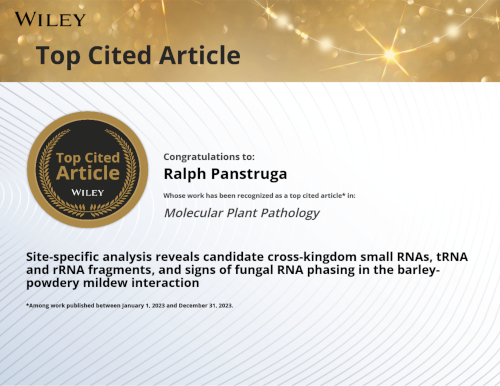
91. Huebbers J. W., Mantz M., Panstruga R., and Huesgen P. 2023.
Proteomics dataset on detached and purified Arabidopsis thaliana rosette leaf trichomes.
Data in Brief 46: 108897.
(PubMed Abstract)
90. Huebbers J. W., Büttgen K., and Panstruga R. 2022.
Efficient isolation and purification of high-quality Arabidopsis thaliana trichomes.
Current Protocols 9: e541.
(PubMed Abstract)
89. Vaghefi N., Kusch S., Németh M. Z., Seress D., Braun U., Takamatsu S., Panstruga R., and Kiss, L. 2022.
Beyond nuclear ribosomal DNA sequences: Evolution, taxonomy, and closest known saprobic relatives of powdery mildew
fungi (Erysiphaceae) inferred from their first comprehensive genome-scale phylogenetic analyses.
Frontiers in Microbiology 13: 903024.
(PubMed Abstract)
88. Acevedo-Garcia J., Walden K., Leissing F., Baumgarten K., Drwiega K., Kwaaitaal M., Reinstädler A., Freh M.,
Dong X., James G. V., Baus L. C., Mascher M., Stein N., Schneeberger K., Brocke-Ahmadinejad N., Kollmar M.,
Schulze-Lefert P., and Panstruga, R. 2022.
Barley Ror1 encodes a class XI myosin required for mlo-based broad-spectrum resistance to the fungal powdery mildew
pathogen.
Plant Journal 112: 84-103.
(PubMed Abstract)
87. Huebbers J.W., Büttgen K., Leissing F., Mantz M., Pauly M., Huesgen P. F., and Panstruga R. 2022.
An advanced method for the release, enrichment and purification of high-quality Arabidopsis thaliana rosette leaf trichomes
enables profound insights into the trichome proteome.
Plant Methods 18: 12.
(PubMed Abstract)
86. Kusch S., Vaghefi N., Takamatsu S., Liu S.-Y., Németh M.Z., Seress D., Frantzeskakis L., Chiu P.-E.
Panstruga, R., and Kiss, L. 2022.
First draft genome assemblies of Pleochaeta shiraiana and Phyllactinia moricola, two tree-parasitic powdery mildew fungi
with hemiendophytic mycelia.
Phytopathology 112: 961-967.
(PubMed Abstract)
85. Durán P., Reinstädler A., Rajakrut A. L., Hashimoto M., Garrido-Oter R., Schulze-Lefert P., and Panstruga R.
2021.
A fungal powdery mildew pathogen induces extensive local and marginal systemic changes in the Arabidopsis thaliana
microbiota.
Environmental Microbiology 23: 6292–6308.
(PubMed Abstract)
84. Gruner K., Leissing F., Sinitski D., Thieron H., Axstmann, C, Baumgarten K., Reinstädler A., Winkler P.,
Altmann M., Flatley A., Jaounnet M., Zienkiewicz K., Feussner I., Keller H., Coustau C., Falter-Braun P.,
Feederle R., Bernhagen J., and Panstruga, R. 2021.
Chemokine-like MDL proteins modulate flowering time and innate immunity in plants.
Journal of Biological Chemistry 296: 100611.
(PubMed Abstract)
This paper was highlighted in ASBMB Today
83. Pereira Mendes M., Hickman R., Van Verk M. C., Nieuwendijk N.M., Reinstädler A., Panstruga R.,
Pieterse C. M. J., and Van Wees S.C.M. 2021.
A family of pathogen-induced cysteine-rich transmembrane proteins in involved in plant disease resistance.
Planta 253: 102.
(PubMed Abstract)
82. Gruner K., Esser T., Acevedo-Garcia J., Freh M., Habig M., Strugala R., Stukenbrock E., Schaffrath U., and Panstruga R. 2020.
Evidence for allele-specific levels of enhanced susceptibility of wheat mlo mutants to the hemibiotrophic fungal pathogen
Magnaporthe oryzae pv. Triticum.
Genes 11: 517.
(PubMed Abstract)
Preprints version
81. Barsoum M., Kusch S., Frantzeskakis L., Schaffrath U., and Panstruga R. 2020.
UV mutagenesis coupled with next-generation sequencing as a method for functional interrogation of powdery mildew
genomes.
Molecular Plant-Microbe Interactions 33: 1008-1021.
(PubMed Abstract)
80. Kusch S., Németh M. Z., Vaghefi N., Ibrahim H. M. M., Panstruga R., and Kiss L. 2020.
A short-read genome assembly resource for Leveillula taurica causing powdery mildew disease of sweet pepper
(Capsicum annuum).
Molecular Plant-Microbe Interactions 33: 782-786.
(PubMed Abstract)
79. Sinitski D., Gruner K., Brandhofer M., Kontos C., Winkler P., Reinstädler A., Bourilhon P., Xiao Z., Cool R.,
Kapurniotu A., Dekker F. J., Panstruga, R., and Bernhagen, J. 2020.
Cross-kingdom mimicry of the receptor signaling and leukocyte recruitment activity of a human cytokine
by its plant orthologs.
Journal of Biological Chemistry 295: 850-867.
(PubMed Abstract)
This paper was highlighted in
Foley J. F. 2020. Plant chemokine mimics..
Science Signaling 13: eabb0387.
78. Wu H., Zhang W., Schuster M., Moch M., Windoffer R., Steinberg G., Staiger C.J., and Panstruga R. 2020.
Alloxan disintegrates the plant cytoskeleton and suppresses mlo-mediated powdery mildew resistance.
Plant & Cell Physiology 61: 505-518.
(PubMed Abstract)
77. Michelet C., Danchin E. G. J., Jaouannet M., Bernhagen, J. Panstruga R., Kogel K.-H., Keller H.,
and Coustau C. 2019.
Cross-kingdom analysis of diversity, evolutionary history, and site selection within the eukaryotic macrophage migration
inhibitory factor superfamily.
Genes 10: 740.
(PubMed Abstract)
76. Frantzeskakis L., Németh M., Barsoum M., Kusch S., Kiss L., Takamatsu S., and Panstruga R. 2019.The Parauncinula polyspora draft genome provides insights in patterns of gene erosion and genome expansion inpowdery mildew fungi.
mBio 10: e01692-19.(PubMed Abstract)BioRxiv version
75. Kusch S., Thiery S., Reinstädler A., Gruner K., Zienkiewicz K., Feussner I., and Panstruga R. 2019.Arabidopsis mlo3 mutant plants exhibit spontaneous callose deposition and signs of early leaf senescence.Plant Molecular Biology 101: 21-40.(PubMed Abstract)
74. Smigielski L., Laubach E.-M., Pesch L., Glock J. M. L., Albrecht F., Slusarenko A., Panstruga R., and Kuhn H. 2019.
Nodulation induces systemic resistance of Medicago truncatula and Pisum sativum against Erysiphe pisi and primes for
powdery mildew-triggered salicylic acid accumulation.
Molecular Plant-Microbe Interactions 32: 1243-1255.
(PubMed Abstract)
73. Saur I. M. L., Bauer S., Kracher B., Lu X., Frantzeskakis L., Müller M. C., Sabelleck B., Kümmel F., Panstruga R.,
Maekawa T. and Schulze-Lefert P. 2019.
Multiple pairs of allelic MLA immune receptor-powdery mildew AVRA effectors argue for a direct recognition mechanism.
eLife 8: e44471.
(PubMed Abstract)
72.
Pennington H. G., Jones R., Kwon S., Bonciani G., Thieron H., Chandler
T., Luong P., Morgan S., Przydacz M., Bozkurt T. O., Bowden S., Craze
M., Wallington E., Garnett J., Kwaaitaal M., Panstruga R. *, Cota E. *,
and Spanu P. D. * 2019.
The fungal
ribonuclease-like effector protein CSEP0064/BEC1054 represses plant
immunity and interferes with degradation of host ribosomal RNA.
PLoS Pathogens 15: e1007620.
(PubMed Abstract) (* co-corresponding authors)
BioRxiv version
71. Lammertz
M., Kuhn H., Pfeilmeier S., Malone J., Zipfel C., Kwaaitaal M., Lin
N.-C., Kvitko B. H., and Panstruga, R. 2019.
Widely-conserved attenuation of plant MAMP-induced calcium influx by
bacteria depends on multiple virulence factors and may involve
desensitization of host pattern recognition receptors.
Molecular Plant-Microbe Interactions 32: 608-621.
(PubMed Abstract)
70. Kusch S., Frantzeskakis L., Thieron H., and Panstruga R. 2018.
Small RNAs from cereal powdery mildew pathogens may target host plant genes.
Fungal Biology 122: 1055-1063.
(PubMed Abstract)
69. Frantzeskakis L., Kracher B., Kusch S., Yoshikawa-Maekawa M., Bauer
S., Pedersen C., Spanu P. D., Maekawa T., Schulze-Lefert P., and Panstruga
R. 2018.
Signatures of host specialization and a recent
transposable element burst in the dynamic one-speed genome of the fungal barley
powdery mildew pathogen.
BMC Genomics 19: 381.
(PubMed Abstract)
BioRxiv version
68. Cui F., Wu H., Safronov O., Zhang P., Kumar R., Kollist H., Salojärvi
J., Panstruga R., and Overmeyer K. 2018.
Arabidopsis MLO2 is a
negative regulator of sensitivity to extracellular reactive oxygen species.
Plant Cell and
Environment 41: 782-796.
(PubMed Abstract)
67. Wu H., Kwaaitaal M., Strugala R., Schaffrath U., Bednarek P., and Panstruga, R. 2017. Chemical suppressors of
mlo-mediated powdery mildew resistance.
Bioscience Reports 37: BSR20171389.
(PubMed Abstract)
66. Acevedo-Garcia J., Gruner K., Reinstädler A., Kemen A., Kemen
E., Cao L., Takken F. W .L., Reitz M. U.,
Schäfer P., O´Connell R. J.,
Kusch S., Kuhn, H., and Panstruga, R. 2017.
The powdery mildew-resistant Arabidopsis mlo2 mlo6 mlo12 triple mutant displays
altered infection phenotypes with diverse types of phytopathogens.
Scientific Reports 7: 9319.
(PubMed Abstract)
65.
Kuhn H., Lorek J., Kwaaitaal M., Consonni C., Becker K., Micali C., Ver
Loren van Themaat E., Bednarek P., Raymaakers T. M., Appiano M., Bai
Y., Meldau D., Baum S., Conrath C., Feussner I., and Panstruga, R. 2017.
Key components of different plant defense pathways are dispensable for powdery mildew resistance of the Arabidopsis mlo2 mlo6 mlo12 triple mutant.
Frontiers in Plant Science 8: 1006.
(PubMed Abstract)
64. Acevedo-Garcia J., Spencer D., Thieron H., Reinstädler
A., Hammond-Kosack K., Phillips A. L., and Panstruga R. 2017.
mlo-based powdery mildew
resistance in hexaploid bread wheat generated by a non-transgenic TILLING
approach.
Plant Biotechnology Journal
15: 367-378.
(PubMed Abstract)

63. Budhagatapalli N., Schedel
S., Gurushidze M., Pencs S., Hiekel S., Rutten T., Kusch S., Morbitzer
R., Lahaye T., Panstruga R., Kumlehn
J., and Hensel G. 2016.
A simple test for the cleavage activity of
customized endonucleases in plants.
Plant
Methods 9: 18.
(PubMed Abstract)

62. Kusch S., Pesch L., and Panstruga R. 2016.
Comprehensive phylogenetic analysis sheds light on the diversity
and origin of the MLO family of integral membrane proteins.
Genome Biology & Evolution 8: 878-895.
(PubMed Abstract)
61. Panstruga* R., Baumgarten K., and Bernhagen J. 2015.
Phylogeny and
evolution of plant macrophage migration inhibitory factor/D-dopachrome
tautomerase-like proteins.
BMC
Evolutionary Biology 15: 64.
(PubMed Abstract)
(* corresponding author)
60. Kusch S., Ahmadinejad N., Panstruga* R., and Kuhn H. 2014.
In silico analysis of the core signaling proteome from the barley powdery mildew pathogen (Blumeria graminis f.sp. hordei).
BMC Genomics 15: 843.
(PubMed Abstract)
(* corresponding author)
59. Maintz J., Cavdar M., Tamborski
J., Kwaaitaal M. Huisman R., Meesters C., Kombrink E., and Panstruga R. 2014.
Comparative analysis of
MAMP-induced calcium influx in Arabidopsis
seedlings and protoplasts.
Plant & Cell
Physiology 55: 1813-1825.
(PubMed Abstract)
58. Weßling R., Epple P E., Altmann S., He Y.,
Yang L., Henz S. R., McDonald N., Wiley K., Bader K. C., Gläßer C.,
Mukhtar M. S., Haigis S., Ghamasari L., Stephens A. E., Ecker J. R.,
Vidal, M. Jones J.D.G., Mayer K. F. X., Ver Loren van Themaat E., Weigel
D., Schulze-Lefert P. Dangl J. L.*, Panstruga R.*, and Braun P.* 2014.
Convergent
targeting of a common host protein-network by pathogen effectors from three
kingdoms of life.
Cell Host & Microbe 16: 364-375.
(PubMed Abstract)
(* co-corresponding authors)
57. Bolger A., Scossa F., Bolger M. E., Lanz C.,
Maumus F., Tohge T., Quesneville H., Alseekh S., Sørensen I, Lichtenstein
G., Fich E. A., Conte M., Keller H., Schneeberger K., Schwacke R., Ofner
I., Vrebalov J., Xu Y., Osorio S., Aflitos S. A., Schijlen E.,
Jiménez-Goméz J. M., Ryngajllo M., Kimura S., Kumar R., Koenig D.,
Headland L.R., Maloof J. N., Sinha N., van Ham R. C. H. J., Lankhorst R.
K., Mao L., Vogel A., Arsova B., Panstruga
R., Fei Z., Rose J.K.C., Zamir D., Carrari F., Giovannoni J. J.,
Weigel D., Usadel B., and Fernie A. R. 2014.
The genome of the stress tolerant wild tomato
species Solanum
pennellii.
Nature Genetics 46: 1034-1038.
(PubMed Abstract)
56. Bidzinski P., Noir S., Shahi
S., Reinstädler A., Gratkowska D. M., and Panstruga R. 2014.
Physiological characterization and genetic
modifiers of aberrant root thigmomorphogenesis in mutants of Arabidopsis thaliana MILDEW LOCUS O genes.
Plant Cell & Environment 37: 2738-2753.
(PubMed Abstract)
55. Schmidt S. M., Kuhn H., Micali
C., Liller C., Kwaaitaal M., and Panstruga
R. 2014.
Interaction of a Blumeria
graminis f.sp. hordei effector
candidate with a barley ARF-GAP suggests vesicle trafficking is a fungal
pathogenicity target.
Molecular Plant
Pathology 15: 535-549.
(PubMed Abstract)

54.
Acevedo-Garcia J., Collins N., Ahmadinejad N., Ma L., Houben A., Bednarek
P., Benjdia M., Freialdenhoven A., Altmüller J., Nürnberg P., Reinhardt
R., Schulze-Lefert P.,
and Panstruga R. 2013.
Fine
mapping and chromosome walking towards the Ror1
locus in barley (Hordeum vulgare L.).
Theoretical and Applied Genetics 126: 2969-2982.
(PubMed Abstract)
53. Feechan A., Jermakow A.M., Ivancevic A.,
Godfrey D., Pak H., Panstruga R.,
and Dry I.B. 2013.
Host cell entry of powdery mildew is correlated with
endosomal transport of antagonistically acting VvPEN1 and VvMLO to the papilla.
Molecular
Plant-Microbe Interactions 26: 1138-1150.
(PubMed Abstract)
52. Lorek J., Griebel T., Jones A. M., Kuhn H., and
Panstruga R. 2013.
The role
of Arabidopsis heterotrimeric G-protein subunits in MLO2 function and
MAMP-triggered immunity.
Molecular
Plant-Microbe Interactions 26: 991-1003.
(PubMed Abstract)
51.
Pedersen C., Ver Loren van Themaat E., McGuffin L. J., Abbott J.
C., Burgis T. A., Barton G., Bindschedler L. V., Lu X., Maekawa
T., Weßling R., Cramer R., Thordal-Christensen H., Panstruga R.*,
and Spanu P.D.* 2012.
Structure and evolution of barley powdery mildew effector candidates.
BMC Genomics 13: 694.
(PubMed Abstract)
(* co-corresponding authors)

50. Weßling R., and Panstruga R. 2012.
Rapid quantification of plant-powdery
mildew interactions by qPCR and conidiospore counts.
Plant Methods 8: 35.
(PubMed Abstract)
49. Kwaaitaal M.,
Maintz J., Cavdar M., and Panstruga
R. 2012.
On the ligand binding profile and desensitization of plant
ionotropic glutamate receptor (iGluR)-like channels functioning in MAMP-triggered Ca2+ influx.
Plant
Signaling & Behavior 7: 1373-1377.
(PubMed Abstract)
48. O'Connell R. J., Thon M. R., Hacquard S., Ver Loren van Themaat E.,
Amyotte S. G., Kleemann J., Torres M. F., Damm U., Buiate E. A., Epstein L., Alkan
N., Altmüller J.,
Alvarado-Balderrama L., Bauser C. L., Becker C., Birren B. W., Chen Z., Choi
J., Crouch J. A., Duvick J. P., Farman M. L., Gan P., Heiman D., Henrissat B., Howard
R. J., Kabbage M.,
Koch C., Kubo Y., Law A. D., Lebrun M. H., Lee Y.-H., Miyara I., Moore N.,
Neumann U., Panaccione D. G., Panstruga R., Place M., Proctor R. H., Prusky D.,
Rech G., Reinhardt R.,
Rollins J. A., Rounsley S., Schardl C. L., Schwartz D. C., Shenoy N., Shirasu
K., Sikhakolli U. R., Stüber K., Sukno S. A., Sweigard J. A., Takano Y., Takahara H.,
Trail F.,
van der Does H. C., Voll L. M., Will I., Young S., Zeng Q., Zhang J., Zhou S.,
Dickman M. B., Schulze-Lefert P., Ma L.-J., and Vaillancourt L. J. 2012.
Life-style transitions in plant pathogenic Colletotrichum fungi deciphered by genome and transcriptome analyses.
Nature Genetics 44: 1060-1065.
(PubMed Abstract)
Faculty of 1000 evaluations for this article (currently F1000 article factor 8)
47. Jiang
K., Frick-Cheng A., Trusov Y., Delgado-Cerezo M., Rosenth, Booker F., Botella J.,
Molina A., Ort D.R., and Jones A M. 2012.
Dissecting Arabidopsis Gβ
signal transduction on the protein surface.
Plant Physiology 159: 975-983.
(PubMed Abstract)

46. Frei
di Frey N., Mbengue M., Kwaaitaal M., Nitsch L., Altenbach D., Häweker
H., Lonzano-Duran R., Njo M. F., Beeckman T., Huettel B., Borst J. W., Panstruga R., and Robatzek S. 2012.
Plasma membrane calcium ATPases are important components of
receptor-mediated signalling in plant immune responses and development.
Plant Physiology 159: 798-809.
(PubMed Abstract)
45. Weßling R., Schmidt S. M., Micali C. O., Knaust F. Reinhardt R., Neumann
U., Ver Loren van Themaat E., and Panstruga,
R. 2012.
Transcriptome analysis of enriched Golovinomyces
orontii haustoria by deep 454 pyrosequencing.
Fungal Genetics & Biology 49: 470-482.
(PubMed Abstract)

44. Klopffleisch K., Phan
N., Augustin K., Bayne R. S., Booker K. S., Botella
J. R., Carpita N. C., Carr T., Chen J.-G., Cooke T. R., Frick-Cheng A., Friedman E.J., Fulk
B., Hahn M. G., Jiang K., Jorda L., Kruppe L., Liu C., Lorek J., McCann
M. C., Molina A., Moriyama E. N., Mukhtar M. S., Mudgil Y., Pattathil
S., Schwarz J., Seta S.,
Tan M., Temp U., Trusov Y., Urano D., Welter B., Yang J., Panstruga R.*, Uhrig J. F.*, and Jones
A.M.* 2011.
Arabidopsis G-protein interactome reveals connections to
cell wall carbohydrates and morphogenesis.
Molecular Systems Biology 7: 532.
(PubMed Abstract)
(* co-corresponding authors)
Faculty of 1000 Evaluations for this article (currently F1000 article factor 8)
43. Kwaaitaal M., Huisman R., Maintz J.,
Reinstädler A., and Panstruga R. 2011.
Ionotropic glutamate receptor (iGluR)-like channels mediate
MAMP-induced calcium influx in Arabidopsis
thaliana. Biochemical Journal 440: 355-365.
(PubMed Abstract)
Most cited paper in the Biochemical Journal Knowledge Environment Plant
42. Humphry M., Reinstädler A., Ivanov S., Bisseling T., and Panstruga R. 2011.
Durable broad-spectrum resistance in pea er1 plants is conferred by natural loss-of-function mutations in PsMLO1.
Molecular Plant Pathology 12: 868-876.
(PubMed Abstract)

41. Micali C., Neumann U., Grunewald D., Panstruga R., and O´Connell R.O. 2011.
Biogenesis of a specialized plant-fungal interface during host cell internalization of Golovinomyces orontii haustoria.
Cellular Microbiology 13: 210-226.
(PubMed Abstract)

40. Spanu P. D., Abbott J. C., Amselem J., Burgis T. A., Soanes
D.M., Stüber K., Ver Loren van Themaat E., Brown J. K. ., Butcher
S. A., Gurr S.J., Lebrun M.-H., Ridout C.J., Schulze-Lefert P., Talbot
N.J., Ahmadinejad N., Ametz C., Barton G.R., Benjdia M., Bidzinski
P., Bindschedler L.V., Both M., Brewer M. T., Cadle-Davidson L.,
Cadle-Davidson M. M., Collemare J., Cramer R., Lopez-Ruiz F., Frenkel
O., Godfrey D., Harriman J., Hoede C., King B. C., Klages S., Kleemann
J., Knoll D., Koti P. S., Kreplak J., Lu X., Maekawa T., Mahanil S.,
Micali C., Milgroom M. G., Montana G., Noir S., O’Connell R. J.,
Oberhaensli S., Parlange F., Pedersen C., Quesneville H., Reinhardt R.,
Rott M., Sacristán S., Schmidt S. M., Schön M., Skamnioti P., Sommer
H., Stephens A., Takahara H., Thordal-Christensen H., Vigouroux M.,
Weßling R., Wicker T., and Panstruga R. 2010.
Genome expansion and gene loss in powdery mildew fungi reveal functional tradeoffs in parasitism.
Science 330: 1543-1546.
(PubMed Abstract)
Faculty of 1000 evaluations for this article (currently F1000 article factor 10)
This paper was highlighted in
Dodds P.N. 2010. Genome evolution in plant pathogens.
Science 330: 1486-1487.

39. Humphry M., Bednarek P., Kemmerling B., Koh S., Stein M,
Goebel U., Stüber K., Piślewska-Bednarek M., Lorraine A.,
Schulze-Lefert P., Somerville S., and Panstruga R. 2010
A regulon conserved in monocot and dicot plants defines a functional module in plant immunity.
Proceedings of the National Academy of Sciences U.S.A. 107: 21896-21901.
(PubMed Abstract)
38. Keinath N. F., Kierszniowska S., Lorek J., Bourdais G.,
Kessler S.A., Asano H., Grossniklaus U., Schulze W., Robatzek S., and
Panstruga R. 2010.
PAMP (Pathogen-Associated Molecular Pattern)-induced changes in plasma
membrane compartmentalization reveal novel components of plant
immunity.
Journal of Biological Chemistry 285: 39140-39149.
(PubMed Abstract)
37. Kessler S. A., Shimosato-Asono H., Keinath N. F., Wuest S.E., Ingram G., Panstruga R., and Grossniklaus U. 2010.
Conserved molecular components for pollen tube reception and fungal invasion.
Science 330: 968-971.
(PubMed Abstract)
Faculty of 1000 evaluations for this article (currently F1000 article factor 10)
This paper was highlighted in
Govers F., and Angenent G. C. 2010. Fertility goddesses as Trojan horses.
Science 330: 922-923.
36. Reinstädler A., Müller J., Czembor J. H., Piffanelli P., and Panstruga R. 2010.
Novel induced mlo mutant alleles in combination with
site-directed mutagenesis reveal functionally important domains in the
heptahelical barley Mlo protein.
BMC Plant Biology 10: 31.
(PubMed Abstract)
35. Kwaaitaal M., Keinath N.F., Pajonk S., Biskup C., and Panstruga R. 2010.
Combined Bimolecular Fluorescence Complementation (BiFC) and
Förster Resonance Energy Transfer (FRET) reveals ternary SNARE complex
formation in living plant cells.
Plant Physiology 152: 1135-1147.
(PubMed Abstract)
34. Consonni C., Bednarek P., Humphry M., Francocci F., Ferrari S., Harzen A., Ver Loren van Themaat E., and Panstruga R. 2010.
Tryptophan-derived metabolites are required for antifungal defence in the Arabidopsis thaliana mlo2 mutant.
Plant Physiology 152: 1544-1561.
(PubMed Abstract)
33. Yoshimoto K., Jikumaru Y., Kamiya Y., Kusano M., Consonni C., Panstruga R., Ohsumi Y., and Shirasu K. 2009.
Plant autophagy negatively regulates cell death by controlling
NPR1-dependent salicylic acid signaling during senescence and innate
immune response.
Plant Cell 21: 2914-2927.
(PubMed Abstract)
32. Chen Z. Y.*, Noir S.*, Kwaaitaal M., Hartmann H. A., Wu M. J., Mudgil Y., Sukumar P., Muday G., Panstruga R.#, and Jones A. M. J. 2009.
Two seven-transmembrane domain MLO proteins co-function in root thigmomorphogenesis.
Plant Cell 21: 1972-1991.
(* these authors contributed equally, # corresponding author)
(PubMed Abstract)

31. Bednarek B., Piślewska-Bednarek M., Svatoš A., Schneider B,
Doubský J, Mansourova M, Humphry M, Consonni C., Panstruga R.,
Sanchez-Vallet A., Molina A., Lim M., Somerville S., and Schulze-Lefert
P. 2009.
A glucosinolate metabolism pathway in living plant cells mediates broad-spectrum antifungal defense.
Science 323: 101-106.
(PubMed Abstract)
Faculty of 1000 evaluations for this article (currently F1000 article factor 6)
30. Noir S., Colby T., Harzen A., Schmidt J., and Panstruga R. 2009.
A proteomic analysis of powdery mildew (Blumeria graminis f.sp. hordei) conidiospores.
Molecular Plant Pathology 10: 223-236.
(PubMed Abstract)

29. Feechan A., Jermakow A., Torregrosa L. L., Panstruga R., and Dry I. I. B. 2008.
Identification of grapevine MLO gene candidates involved in susceptibility to powdery mildew.
Functional Plant Biology 35: 1255-1266.
28. Pajonk S., Kwon C., Clemens N., Panstruga R., and Schulze-Lefert P. 2008.
Activity determinants and functional specialization of Arabidopsis PEN1 syntaxin in innate immunity.
Journal of Biological Chemistry 283: 26974-26984.
(PubMed Abstract)
27. Kwon C., Neu C., Pajonk S., Yun H. S., Lipka U., Humphry M.
E., Bau S., Straus M., Rampelt H., El Kasmi F., Jürgens G., Parker J.,
Panstruga R.*, Lipka V.*, and Schulze-Lefert P.* 2008.
Co-option of a default secretory pathway for plant immune responses.
Nature 451: 835-840.
(*co-corresponding authors)
(PubMed Abstract)
26. Göllner K., Schweizer P., Bai Y., and Panstruga R. 2008.
Natural genetic resources of Arabidopsis thaliana reveal a high prevalence and unexpected phenotypic plasticity of RPW8-mediated powdery mildew resistance.
New Phytologist 177: 725-742.
(PubMed Abstract)
25. Bai Y., Pavan S., Zheng Z., Zappel N. F., Reinstädler A.,
Lotti C., De Giovanni C., Ricciardi L., Lindhout P., Visser R., Theres
K., and Panstruga R. 2008.
Naturally occurring broad-spectrum powdery mildew resistance in a Central American tomato accession is caused by loss of Mlo function.
Molecular Plant-Microbe Interactions 21: 30-39.
(PubMed Abstract)
24. Freymark G., Diehl T., Miklis M., Romeis T., and Panstruga R. 2007.
Antagonistic control of powdery mildew host cell entry by barley calcium-dependent protein kinases (CDPKs).
Molecular Plant-Microbe Interactions 20: 1213-1221.
(PubMed Abstract)
23. Miklis M., Consonni C., Bhat R. A., Lipka V., Schulze-Lefert P., and Panstruga, R. 2007.
Barley MLO modulates actin-dependent and actin-independent antifungal defence pathways at the cell periphery.
Plant Physiology 144: 1132-1143.
PubMed Abstract)
22. Consonni C.*, Humphry M. E.*, Hartmann
H. A., Livaja M., Durner J., Westphal L., Vogel J., Lipka V.,
Schulze-Lefert P., Somerville S. C., and Panstruga R. 2006.
Conserved requirement for a plant host cell protein in powdery mildew pathogenesis.
Nature Genetics 38: 716-720.
(* these authors contributed equally)
(PubMed Abstract)
21. Chen Z., Hartmann H. A., Wu M.-J., Friedman E. J., Chen
J.-G., Pulley M., Schulze-Lefert P., Panstruga R., and Jones A. M. 2006.
Expression analysis of the AtMLO gene family encoding plant-specific seven-transmembrane domain proteins.
Plant Molecular Biology 60: 583-597.
(PubMed Abstract)
20. Noir S., Bräutigam A., Colby T., Schmidt J,. and Panstruga R. 2005.
A reference map of the Arabidopsis thaliana mature pollen proteome.
Biochemical and Biophysical Research Communications 337: 1257-1266.
(PubMed Abstract)
This paper was highlighted in
The
A. thaliana pollen proteome.
Journal of Proteome Research 5: 463-465. 2006.
19. Panstruga R. 2005.
Discovery of novel conserved peptide domains by ortholog comparison within plant multi-protein families.
Plant Molecular Biology 59: 485-500.
(PubMed Abstract)
18. Van Damme M., Andel A., Huibers R. P., Panstruga R., Weisbeek P. J., and van den Ackerveken G. 2005.
Identification of Arabidopsis loci required for susceptibility to the downy mildew pathogen Hyaloperonospora parasitica.
Molecular Plant-Microbe Interactions 18: 583-592.
(PubMed Abstract)
17. Panstruga R., Molina-Cano J., Reinstädler A., and Müller J. 2005.
Molecular characterization of mlo mutants in North American two- and six-rowed malting barley cultivars.
Molecular Plant Pathology 6: 315-320.
(PubMed Abstract)
16. Bhat R. A., Miklis M., Schmelzer E., Schulze-Lefert P., and Panstruga, R. 2005.
Recruitment and interaction dynamics of plant penetration resistance components in a plasma membrane micro-domain.
Proceedings of the National Academy of Sciences U.S.A. 102: 3135-3140.
(PubMed Abstract)
15. Müller J., Piffanelli P., Devoto A., Miklis M., Elliott C., Ortmann B., Schulze-Lefert P., and Panstruga R. 2005.
Conserved ERAD-like quality control of a plant polytopic membrane protein.
Plant Cell 17: 149-163.
(PubMed Abstract)
14. Elliott C.*, Müller J.*, Miklis M., Bhat R. A., Schulze-Lefert P., and Panstruga R. 2005.
Conserved extracellular cysteines and cytoplasmic loop-loop
interplay are required for functionality of the heptahelical MLO
protein.
Biochemical Journal 385: 243-254.
(* these authors contributed equally)
(PubMed Abstract)
13. Piffanelli P.*, Ramsay L.*, Waugh R., Benabdelmouna A., D´Hont A., Hinze K., Jørgensen H.J., Schulze-Lefert P., and Panstruga R. 2004.
A barley cultivation-associated polymorphism conveys resistance to powdery mildew.
Nature 430: 887-891.
(* these authors contributed equally)
(PubMed Abstract)
This paper was highlighted in
Skipper M. 2004. Capitalizing on natural potential.
Nature Reviews Genetics 5: 717.
Peterhänsel C. and Lahaye T. 2005. Be fruitful and multiply: gene amplification inducing pathogen resistance.
Trends in Plant Science 10: 257-260.

12. Jacobs A. K.*, Lipka V.*, Burton R. A., Panstruga R., Strizhov N., Schulze-Lefert P., and Fincher G. B. 2003.
An Arabidopsis thaliana callose synthase,GSL5, is required for wound and papillary callose formation.
Plant Cell 15: 2503-2513.
(* these authors contributed equally)
(PubMed Abstract)
11. Panstruga R., Kim M. C., Cho M. J., and Schulze-Lefert P. 2003.
Testing the efficiency of dsRNAi constructs in vitro: A transient expression assay based on two fluorescent proteins.
Molecular Biology Reports 30: 135-140.
(PubMed Abstract)
10. Devoto A., Hartmann H. A., Piffanelli P., Elliott C., Simmons
C., Taramino G., Goh C.-S., Cohen F. E., Emerson B. C., Schulze-Lefert
P., and Panstruga R. 2003.
Molecular phylogeny and evolution of the plant-specific seven transmembrane MLO family.
Journal of Molecular Evolution 56: 77-88.
(PubMed Abstract)
9. Elliott C., Zhou F., Spielmeyer W., Panstruga R., and Schulze-Lefert P. 2002.
Functional conservation of wheat and rice Mlo orthologs in plant defence modulation to powderymildew.
Molecular Plant Microbe Interactions 15: 1069-1077.
(PubMed Abstract)
8. Piffanelli P., Zhou F., Casais C., Orme J., Schaffrath U., Collins N., Panstruga R., and Schulze-Lefert P. 2002.
The barley MLO modulator of defence and cell death is responsive to biotic and abiotic stress stimuli.
Plant Physiology 129: 1076-1085.
(PubMed Abstract)
7. Kim M. C.*, Panstruga R.*, Elliott C., Müller J., Devoto A., Yoon H. W.,Park H., Cho M. J., and Schulze-Lefert P. 2002.
Calmodulin interacts with MLO to regulate defence against mildew in barley.
Nature 416: 447-450.
(*co-authors in alphabetical order)
(PubMed Abstract)
This paper was highlighted in
Stein M. and Somerville S. 2002. MLO, a novel modulator of plant defenses and cell death, binds calmodulin.
Trends in Plant Science 7: 379-380.
6. Devoto A., Piffanelli P., Nilsson I., Wallin E., Panstruga R., von Heijne G., and Schulze-Lefert P. 1999.
Topology, subcellular localization, and sequence diversity of the Mlo family in plants.
Journal of Biological Chemistry 274: 34993-35004.
(PubMed Abstract)
5. Panstruga R., Büschges R., Piffanelli P., and Schulze-Lefert P. 1998.
A contiguous 60 kb genomic stretch from barley reveals molecular evidence for gene islands in a monocot genome.
Nucleic Acids Research 26: 1056-1062.
(PubMed Abstract)
4. Büschges R.*, Hollricher K.* , Panstruga R.*, Simons G.*,
Wolter M., Frijters A., van Daelen R., van der Lee T., Diergaarde
P.,Groenendijk J., Töpsch S., Vos P., Salamini F., and SchulzeLefert P.
1997.
The barley Mlo gene: A novel control element of plant pathogen resistance.
Cell 88: 695-705.
(*co-authors in alphabetical order)
(PubMed Abstract)
This paper was highlighted in
Gebhardt C. 1997. Plant genes for pathogen resistance- variation on a theme.
Trends in Plant Science 2: 243-244.
Minorsky P. V. 2001. The hot and the classic.
Plant Physiology 125: 1162-1163.
3. Panstruga R., Hippe-Sanwald S., Yeon-Kyeong L., Lataster M.,
Lipka V., Fischer R., Liao Y. C., Häusler R. E., Kreuzaler F., and
Hirsch, H.-J. 1997.
Expression and chloroplast-targeting of active phosphoenolpyruvate synthetase from Escherichia coli in Solanum tuberosum.
Plant Science 127:191-205.
2. Gehlen J., Panstruga R., Smets H., Merkelbach S., Kleines M.,
Porsch P., Fladung M., Becker I., Rademacher T., Häusler R. E., and
Hirsch H.-J. (1996).
Effects of altered phosphoenolpyruvate carboxylase activities on transgenic C3 plant Solanum tuberosum.
Plant Molecular Biology 32: 831-848.
(PubMedAbstract)
1. Panstruga R., Seiler A., Hirsch H.-J., and Kreuzaler F. 1995.
Genomic structure of a phosphoenolpyruvate carboxylase gene from potato (Solanum tuberosum) (Accession No. X90982) (PGR95-086).
Plant Physiology 109: 110.
Review articles
35. Kusch S.,
Qian J., Loos A., Kümmel, F., Spanu P. D., and Panstruga R. 2024.
Long-term and rapid evolution in powdery
mildew fungi.
Molecular Ecology 33: e16909.
(PubMed
Abstract)
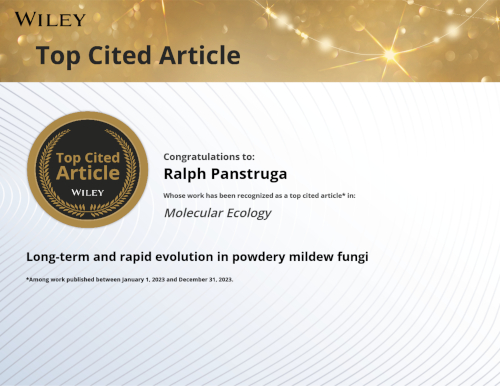
34. Panstruga R. and Spanu P. D. 2023.
Transfer RNA and ribosomal
RNA fragments – emerging players in plant-microbe interactions.
New Phytologist 241: 567-577.
(PubMed Abstract)
33.
Panstruga R., Antonin W., and Lichius A. 2023.
Looking outside the box: A comparative cross-kingdom
view on the cell biology of the three major lineages of eukaryotic
multicellular life.
Cellular and Molecular
Life Science 80: 198.
(PubMed Abstract)
32. Panstruga, R., Donnelly, S. C., and
Bernhagen J. 2022.
A cross-kingdom view on the immunomodulatory role of MIF/D-DT
proteins in mammalian and plant Pseudomonas
infections.
Immunology 166: 287-298.
(PubMed Abstract)
31. Freh M.,
Gao J., Pedersen M., and Panstruga R.
2022.
Plant autoimmunity – fresh insights into an old phenomenon.
Plant Physiology 188: 1419-1434.
(PubMed Abstract)
30. Saur I. M. L., Panstruga R., and Schulze-Lefert P. 2021.
NOD-like receptor-mediated plant immunity: From structure to cell death.
Nature Reviews Immunology 21: 305-318.
(PubMed Abstract)
29. Panstruga R. and Moscou M. J. 2020.
What is the molecular
basis of nonhost resistance?
Molecular
Plant-Microbe Interactions 33: 1253-1264.
(PubMed Abstract)

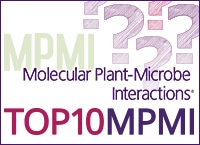
28.
Barsoum M. Sabelleck B., Spanu P. D., and Panstruga R. 2019.
Rumble in the effector jungle: Candidate
effector proteins in interactions of plants with powdery mildew and rust fungi.
Critical Reviews in Plant Sciences 38:
255-279.
27.
Frantzeskakis L., Di Pietro A., Rep M., Schirawski J., Wu C.-H., and Panstruga, R. 2019.
Rapid
evolution in plant-microbe interactions - a molecular genomics perspective.
New Phytologist 225: 1134-1142.
(PubMed Abstract)
26. Panstruga R. and Kuhn H. 2019.
Mutual interplay between phytopathogenic powdery mildew fungi and other microorganisms.
Molecular Plant Pathology 20: 463-470.
(PubMed Abstract)
25. Kusch S. and Panstruga R. 2017.
mlo-based resistance: An apparently universal "weapon" to defeat powdery mildew disease.
Molecular Plant-Microbe Interactions 30: 179-189.
(PubMed Abstract)

24. Kuhn H., Kwaaitaal M., Kusch S.,
Acevedo-Garcia J., Wu H., and Panstruga
R. 2016.
Biotrophy at its best – novel insights and unsolved mysteries of
the Arabidopsis-powdery mildew pathosystem.
Arabidopsis Book 14: e0184.
(PubMed Abstract)
23. Bindschedler L. V., Panstruga R.*, and Spanu P. D. 2016.
Mildew-omics: How global analyses aid the understanding of life and evolution of powdery mildews.
Frontiers in Plant Science 7: 123.
(PubMed Abstract)
(* corresponding author)
22. Acevedo-Garcia J.,
Kusch S, and Panstruga R. 2014.
Magical mystery tour: MLO
proteins in plant immunity and beyond.
New
Phytologist 204: 273-281.
(PubMed Abstract)
21. Hückelhoven R. and Panstruga R. 2011.
Cell biology of the plant-powdery mildew interaction.
Current Opinion in Plant Biology 14: 738-746.
(PubMed Abstract)
20. Schmidt S. M. and Panstruga R. 2011.
Pathogenomics of fungal plant parasites: What have we learnt about pathogenesis?
Current Opinion in Plant Biology 14: 392-399.
(PubMed Abstract)
19. Schulze-Lefert P. and Panstruga R. 2011.
A molecular evolutionary concept connecting nonhost resistance, pathogen host range, and pathogen speciation.
Trends in Plant Science 16: 117-125.
(PubMed Abstract)
18. Panstruga R.* and Dodds P. N.* 2009.
Terrific protein traffic: The mystery of effector protein delivery by filamentous plant pathogens.
Science 324: 748-750.
(PubMed Abstract)
(* co-corresponding authors)

17. Panstruga R., Parker J. E., and Schulze-Lefert, P. 2009.
SnapShot: Plant Immune Response Pathways.
Cell 136: 978e1-e3.
(PubMed Abstract)
16. Micali C., Göllner K., Humphry M., Consonni C., and Panstruga R. 2008.
The powdery mildew disease of Arabidopsis: A paradigm for the interaction between plants and biotrophic fungi.
Arabidopsis Book 6: e0115.
(PubMed Abstract)
15. Zappel N. and Panstruga R. 2008.
Heterogeneity and lateral compartmentalization of plant plasma membranes.
Current Opinion in Plant Biology 11: 632-640.
(PubMed Abstract)
14. Kwon C., Panstruga R., and Schulze-Lefert P. 2008.
Les liaisons dangerouse: Immunological synapse formation in animals and plants.
Trends in Immunology 29: 159-166.
(PubMed Abstract)
13. Schmidt S. M. and Panstruga R. 2007.
Cytoskeleton functions in plant-microbe interactions.
Physiological and Molecular Plant Pathology 71: 135-148.
12. Lipka V., Kwon C., and Panstruga, R. 2007.
SNARE-ware: The role of SNARE-domain proteins in plant biology.
Annual Review of Cell and Developmental Biology 23: 147-174.
(PubMed Abstract)
11. Humphry M., Consonni C., and Panstruga R. 2006.
mlo-based powdery mildew immunity: Silver bullet or simply non-host resistance?
Molecular Plant Pathology 7: 605-610.
(PubMed Abstract)
10. Bhat R. A., Lahaye T., and Panstruga R. 2006.
The visible touch: in planta visualization of protein-protein interactions by fluorophore-based methods.
Plant Methods 2: 12.
(PubMed Abstract)

9. O´Connell R. J. and Panstruga R. 2006.
Tansley Review: Téte-a-téte inside a plant cell: Establishing compatibility between plants and biotrophic fungi and oomycetes.
New Phytologist 171: 699-718.
(PubMed Abstract)
8. Lipka V. and Panstruga R. 2005.
Dynamic cellular responses in plant-microbe interactions.
Current Opinion in Plant Biology 8: 625-631.
(PubMed Abstract)
7. Bhat R.A. and Panstruga R. 2005.
Lipid rafts in plants.
Planta 223: 5-19.
(PubMed Abstract)
6. Panstruga R. 2005.
Serpentine plant MLO proteins as entry portals for powdery mildew fungi.
Biochemical Society Transactions 33: 389-392.
(PubMed Abstract)
5. Panstruga R. 2004.
A golden shot: how ballistic single cell transformation boosts the molecular analysis of cereal-mildew interactions.
Molecular Plant Pathology 5: 141-148.
4. Schulze-Lefert P. and Panstruga R. 2003.
Estabishment of biotrophy by parasitic fungi and reprogramming of host cells for disease resistance.
Annual Review of Phytopathology 41: 641-667.
(PubMed Abstract)
3. Panstruga R. 2003.
Establishing compatibility between plants and obligate biotrophic pathogens.
Current Opinion in Plant Biology 6: 320-326.
(PubMed Abstract)
2. Panstruga R. and Schulze-Lefert P. 2003.
Corruption of host seven-transmembrane proteins by pathogenic microbes: a common theme in animals and plants?
Microbes and Infection 5: 429-437.
(PubMed Abstract)
1. Panstruga R. and Schulze-Lefert P. 2002.
Live and let live: insights into powdery mildew disease and resistance.
Molecular Plant Pathology 3: 495-502.
Miscalleneous publications (book chapters, commentaries, editorials etc.)
24. Panstruga, R.,
Fürst-Jansen, J., and de Vries, J. 2025.
Plant terrestrialization: Piecing together
streptophyte trait evolution. An introduction to a Virtual Issue.
New Phytologist 247: 1963-1970.
(PubMed Abstract)

23. Thieron H., Krassini L., Kwon S., Fricke S., Nasfi
S., Oberkofler L., Ruf A., Kehr J., Kogel K.-H., Weiberg A., Feldbrügge M., Robatzek
S., and Panstruga R. 2024.
Practical advice for Extracellular Vesicle isolation in plant-microbe
interactions: Concerns, considerations and conclusions.
Journal of Extracellular Vesicles 13: e70022.
(PubMed Abstract)
22. Leissing F., Reinstädler A., Thieron H., and Panstruga R. 2022.
Gene gun-mediated transient gene expression for functional studies in plant immunity.
Methods in Molecular Biology 2523:
63-77.
(PubMed Abstract)
21. Kogel, K.-H., Bindereif A., Feldbrügge M., Göhre
V. Goesmann A., Kehr J., Panstruga R.,
Preußer C. Robatzek S., and Weiberg, A. 2021.
Establishment
of a DFG-funded research group on the topic of plant-microbe communication through
extracellular RNA. Trillium
Extracellular Vesicles 3: 17-23.
20.
Thieron, H. Singh, M., and Panstruga, R. 2021.
One microRNA-like small RNA - two silencing pathways?
New Phytologist 232: 464-467.
(PubMed Abstract)
19. Sinitski D., Gruner K., Bernhagen J., and Panstruga R. 2020.
Studying
plant MIF/D-DT-like genes and proteins (MDLs).
Methods in Molecular Biology 2080: 249-261.
(PubMed Abstract)
18. Jin
H., Mitchum M., Panstruga R., and
Stone J. 2019.
Focus Issue Editorial: Biotic Stress.
Plant Physiology 179: 1193-1195.
(PubMed Abstract)

17.
Panstruga R. 2019.
Profile: Ralph Panstruga.
New Phytologist 222: 33-34.
(PubMed Abstract)
16. Frantzeskakis L., Kusch S., and Panstruga R. 2019.
The need for speed: Compartmentalized genome evolution in filamentous phytopathogens.
Molecular Plant Pathology 20: 3-7.
(PubMed Abstract)
15. Sabelleck B. and Panstruga R. 2018.
Novel jack-in-the-box effector of the
barley powdery mildew pathogen?
Journal
of Experimental Botany 69: 3511-3514.
(PubMed Abstract)
14. Frantzeskakis L., von Dahlen J. K., Panstruga R.*, and Rose L. E. 2018.
Rapid evolution in the tug-of-war between microbes and plants. 20th New Phytologist workshop/SPP1819 workshop, Vaals, The Netherlands, February, 2018 (Meeting report).
New Phytologist 219: 12-14.
(PubMed Abstract)
(* corresponding author)
13. Thordal-Christensen H., Birch P. R. J., Spanu P. D., and Panstruga R. 2018.
Why did
filamentous plant pathogens evolve the potential to secrete hundreds of
effectors to enable disease?
Molecular
Plant Pathology 19: 781-785.
(PubMed Abstract)
12. Spanu P. D. and Panstruga
R. 2017.
Editorial: Biotrophic plant-microbe interactions (Editorial).
Frontiers in Plant Science 8: 192.
11. Panstruga R. 2016.
Bacterial RNA - a new MAMP on the block?
New Phytologist 209: 458-460.
(PubMed Abstract)
10. Panstruga R. and Kuhn H. 2015.
Introduction to a Virtual Special Issue on cell biology at the plant-microbe interface (Editorial).
New Phytologist 207: 931-938.
(PubMed Abstract)
9. Kuhn H. and Panstruga R. 2014.
Introduction to a Virtual Special Issue on phytopathogen effector proteins (Editorial).
New Phytologist 202: 727-730.
(PubMed Abstract)
8. Panstruga R. and Spanu P. D. 2014.
Powdery mildew genomes reloaded (Meeting report).
New Phytologist 202: 13-14.
(PubMed Abstract)
7. Spanu P. D. and Panstruga R. 2012.
Powdery mildew genomes in the crosshairs - 2nd International Powdery
Mildew Workshop and 3rd New Phytologist Workshop, Zürich,
Switzerland, February, 2012 (Meeting report).
New Phytologist 195: 20-22.
(PubMed Abstract)
6. Panstruga R. 2010.
Introduction to a Virtual Special Issue on pathogenic plant-fungus interactions (Editorial).
New Phytologist 188: 907-910.
(PubMed Abstract)
5. Lorek J., Hückelhoven R., and Panstruga R. 2009.
The role of seven-transmembrane domain MLO proteins, heterotrimeric G-proteins, and monomeric RAC/ROPs in plant defense.
In: Integrated G Proteins Signaling in Plants, Yalowsky S., Baluska F., and Jones A. eds., Springer, Heidelberg, Germany, pp. 197-220.
4. Consonni C., Humphry M., and Panstruga R. 2009.
Defence Responses in Plants.
In: The Mycota - Plant Relationships Vol. V, Esser K. and Deising H. B. eds., Springer, Heidelberg, Germany, pp. 363-385.
3. Yun H.-S., Panstruga R., Schulze-Lefert P., and Kwon C. 2008.
Ready to fire: secretion in plant immunity (Addendum).
Plant Signaling & Behavior 3: 505-508.
(PubMed Abstract)
2. Panstruga R. 2006.
Tête-a-tête zwischen Pilz und Pflanze: Wie Mehltaupilze ihre Wirtspflanzen manipulieren.
In: Max-Planck Jahrbuch 2006
1. Consonni C., Humphry M., Vogel J., Schulze-Lefert P., Somerville S., and Panstruga R. 2006.
mlo-mediated broad-spectrum powdery mildew resistance in Arabidopsis thaliana.
In: Biology of Plant-Microbe Interactions Vol. 5,
Sánchez F., Quinto C., López-Lara M., and Geiger O. eds., International
Society for Plant Microbe Interactions, St. Paul, Minnesota, U.S.A.,
pp. 215-219.
Patents
3. Panstruga R., Miklis M., Schulze-Lefert P., and Frank, M.
Method for production of transgenic plants with increased
pathogenic resistance by altering the content of actin-depolymerising
factors
Patent number WO002006012985 (PCT/EP2005/007688)
2. Schweizer P., Dudler R., Schulze-Lefert P., and Panstruga R.
Promoter for the epidermis-specific transgenic expression in plants
Patent number WO002005035766A1 (PCT/EP2004/011214)
1. Panstruga R., Büschges R., and Schulze-Lefert P.
Polynucleotide and its use for modulating a defense response in plants
Patent number WO001998004586A3 (PCT/GB1997/002046)
Last updated: 26.09.2025

